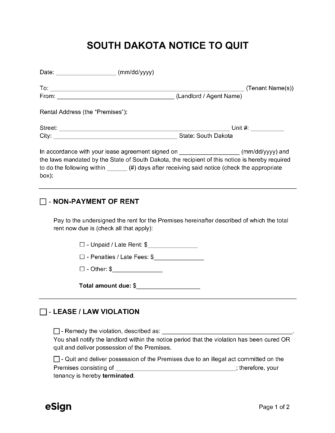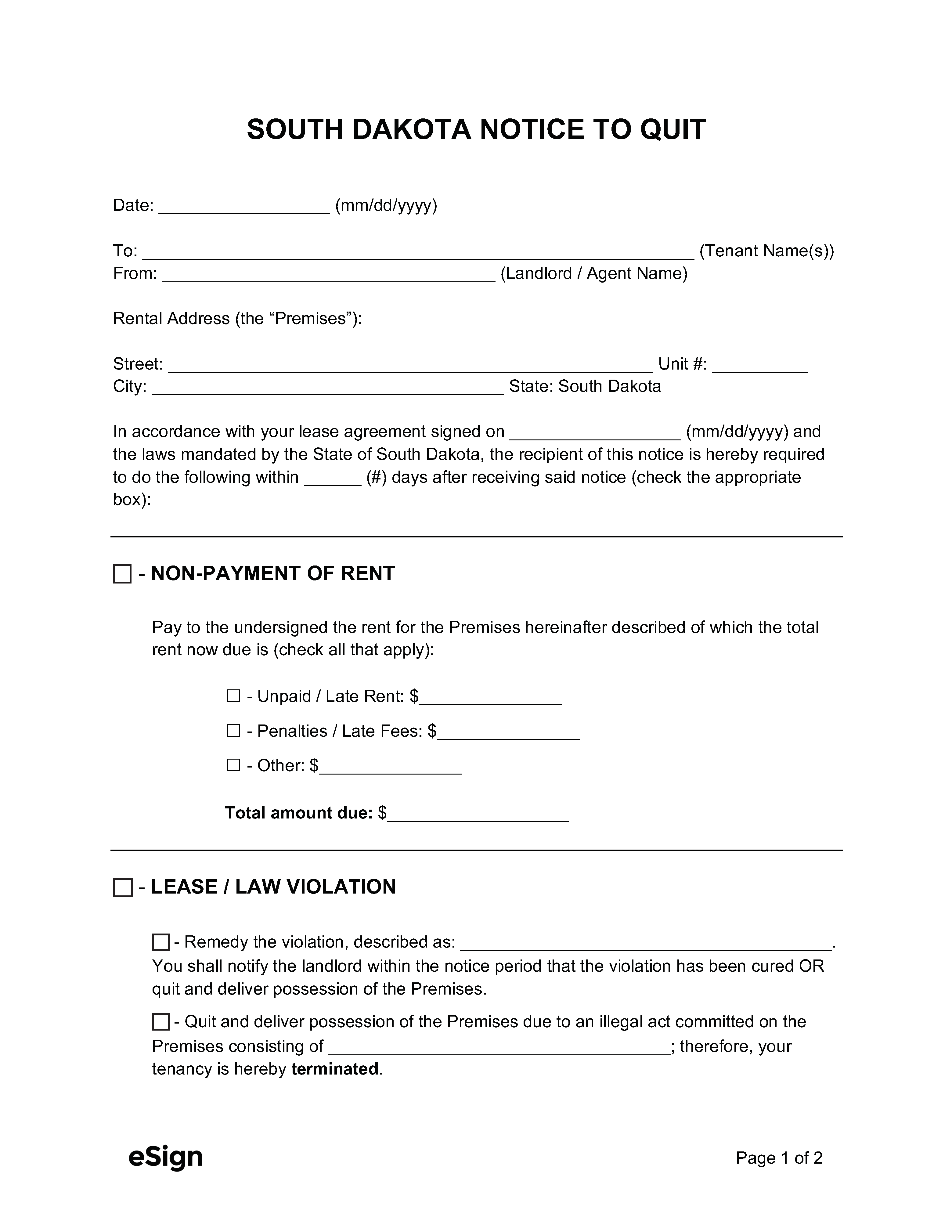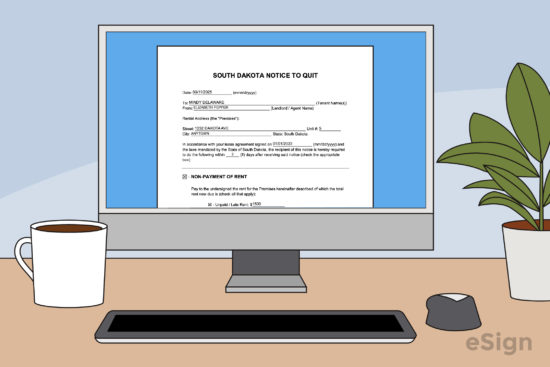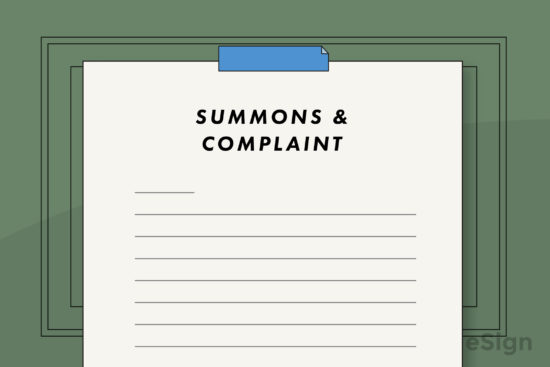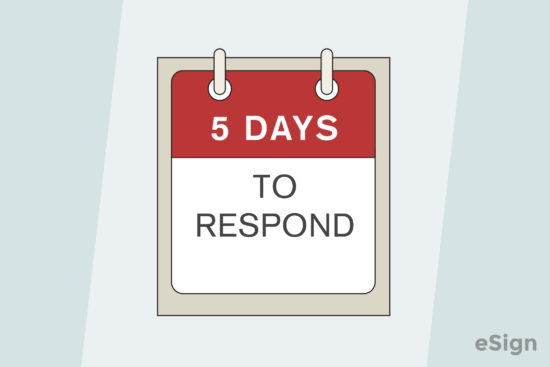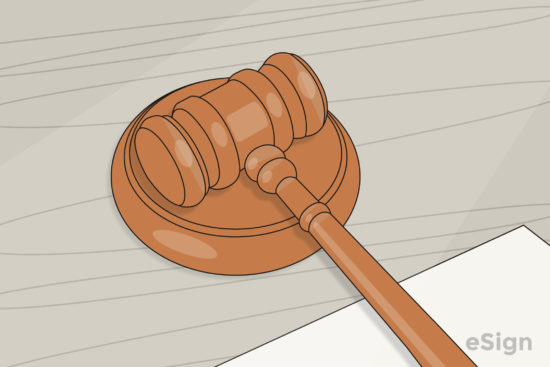Eviction Notices: By Type (4)
 Notice to Quit | Non-Payment – Requires a tenant who has missed rent to pay the owed amount by the specified date or vacate. Notice to Quit | Non-Payment – Requires a tenant who has missed rent to pay the owed amount by the specified date or vacate.
Download: PDF, Word (.docx), OpenDocument |
 Notice to Quit | Non-Compliance – Terminates the lease of a tenant who has caused property damage or violated their lease terms. Notice to Quit | Non-Compliance – Terminates the lease of a tenant who has caused property damage or violated their lease terms.
Download: PDF, Word (.docx), OpenDocument |
 Notice to Quit | Term Expiration – Used to evict a tenant who continues to occupy a unit after their lease has ended. Notice to Quit | Term Expiration – Used to evict a tenant who continues to occupy a unit after their lease has ended.
Download: PDF, Word (.docx), OpenDocument |
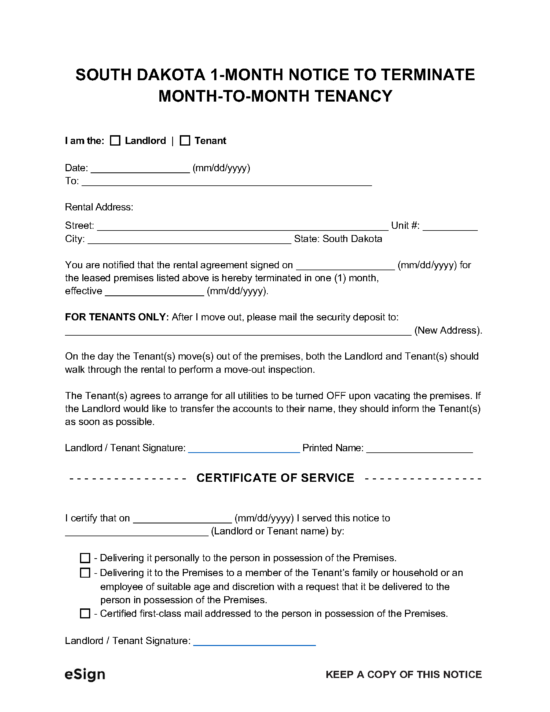 1-Month Notice to Terminate | Month-to-Month Lease – Allows either a landlord or tenant to give a one-month notice to end a tenancy. 1-Month Notice to Terminate | Month-to-Month Lease – Allows either a landlord or tenant to give a one-month notice to end a tenancy.
Download: PDF, Word (.docx), OpenDocument |
Notice Requirements
How to Evict a Tenant in South Dakota
Step 1 – Complete Notice to Quit (Optional)
A notice to quit is an optional form sent to give the tenant a chance to fix a lease violation or vacate the unit before a formal case is filed.
If a tenant misses rent, the landlord has two options:
- Serve a notice to quit and file for eviction anytime thereafter; or
- Wait three days and file for eviction without notice if rent is still unpaid.
For a lease violation or holdover tenant, the landlord can file for eviction right away with or without notice.
Step 2 – Summons and Complaint
If the tenant doesn’t comply with the notice demands (if applicable), the landlord can begin the eviction process by completing and filing a Summons, Complaint, and Case Filing Statement with the Circuit Court (or Magistrate Court) in the county where the property is located.
Once filed, the Summons and Complaint will be served on the tenant by a sheriff or process server. If in-person service fails after two attempts, the delivering party will post them on the premises and send them by first class mail to the tenant’s address.
Step 3 – Tenant’s Answer
The tenant has five days to file an Answer with the court and respond to the landlord’s complaint. Failing to file an Answer may result in a default judgment against the tenant.
Step 4 – File Documents
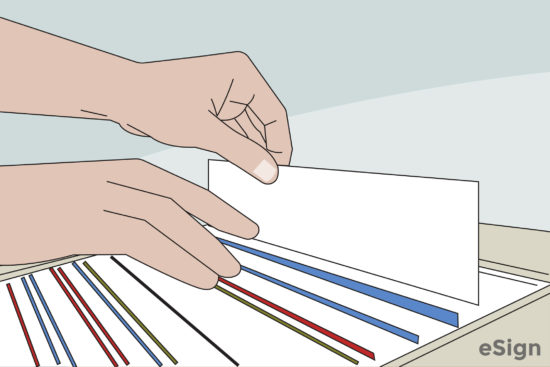
After the tenant files an Answer, the landlord can contact the court clerk to schedule a hearing. A Notice of Hearing should then be completed and filed with the court and mailed to the tenant. After mailing, an Affidavit of Mailing must be filed with the court.
The landlord must complete the caption section (the top of the form) of the Judgment of Eviction and Damages and bring it to the trial.
Step 5 – Trial
At the trial, the judge will hear both sides and issue a verdict. If the landlord wins, the Judgment will be signed. The landlord will then have to complete and file the Notice of Entry of Judgment of Eviction and Damages. Both forms must be mailed to the tenant and another Affidavit of Mailing must be filed with the court.
If the tenant owes rent, the court will also order the tenant to pay the balance owed plus any damages, court costs, and legal fees.
Step 6 – Removal of Tenant
If the tenant doesn’t leave after the judgment, the landlord can file for an Execution for Possession (or “Lockout”), which authorizes the sheriff to remove the tenant from the premises
Court Forms + Resources
Forms
- Affidavit of Mailing
- Signed by: Landlord, Court Clerk
- Answer
- Signed by: Tenant
- Case Filing Statement
- Signed by: N/A
- Complaint
- Signed by: Landlord, Process Server
- Execution for Possession
- Signed by: Magistrate Judge
- Notice of Entry of Judgment of Eviction and Damages
- Signed by: Landlord
- Notice of Hearing
- Signed by: Landlord
- Summons
- Signed by: Court Clerk, Process Server
Resources
